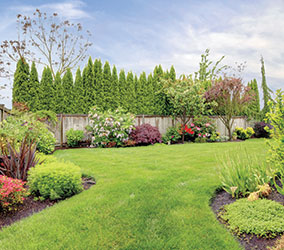Tackling Crabgrass
Newsletters, Uncategorized | 03.25.20
Crabgrass is persistent. No matter how much work we put into keeping it out of our lawns, you can be sure that it will stage a comeback every year. Just one crabgrass plant can produce thousands of seeds per season, making it a tough weed to eliminate.
Crabgrass can make a mess of your lawn as it edges out the good grass you want to have growing on your property. It is lighter green in color and coarser in texture than desirable lawn grasses, so it can seriously detract from the uniformity of your lawn if it’s allowed to gain a foothold.
Once crabgrass plants start growing in the late spring and early summer, they expand outward. The plants eventually die off in the fall, leaving behind dead areas in the lawn where new crabgrass seeds are likely to germinate again during the following year.
Crabgrass will grow wherever it can. It fills in empty spaces in a thin or patchy lawn, but it has a harder time getting established in a thick, healthy lawn. Lawns that are under-watered and/or under-fertilized provide ideal growing conditions for this opportunistic weed. That’s why proper lawn care practices are especially important.
Pre-emergent herbicides applied early in the spring can help hinder crabgrass germination. In addition to this, regular fertilization and sufficient watering will encourage a denser, more vigorous lawn that is less prone to crabgrass invasion.



